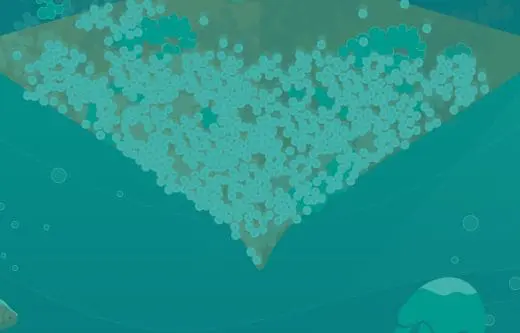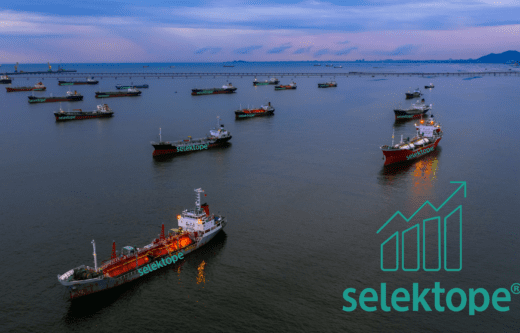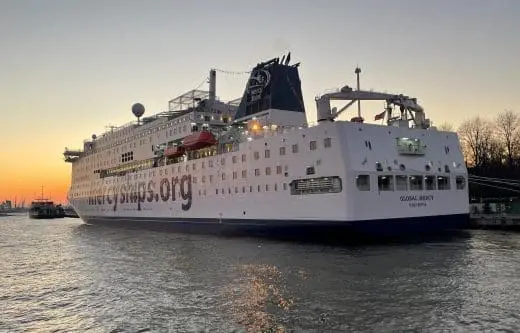A future-proof approach to hard fouling prevention
Often described as the workhorses of the maritime trade, bulk carriers operate day in, day out, transiting liquid bulk cargoes and the millions of dry bulk commodities traded every day across the oceans of the world. More than eight years have passed since dry bulk freight rates reached a historic low in January 2008, and whilst the dry bulk market has since made strides ahead in its recovery, rates are yet to return to pre-collapse levels.
Enhancing ship efficiency in order to achieve healthier profit margins and maintain commercial buoyancy is imperative for bulker operators. There are many areas in which ship efficiency can be compromised onboard a ship, the hull and ship frictional resistance being a major weak spot.
For bulk carriers voyaging in and out of intensifying ‘biofouling hotspots’ positioned across the globe, the accumulation of biological matter on the ship’s hull can add thousands of dollars per day to ship operating costs which in turn erodes company revenues.
This financial drain is a result of the biological hitch hikers increasing ship frictional resistance, also referred to as hydrodynamic drag, as the vessel moves through water. The added resistance in turn increases fuel consumption as the ship must burn more fuel to maintain the same speed. A heavily fouled hull is, of course, extremely impactful on fuel consumption and maintenance costs but even a small amount of fouling may lead to a significant increase in required fuel bunkered per voyage.
The impact of fouling on ship performance is greatly dependent on the type and coverage of fouling. Some soft fouling may be ‘washed off’ when an idling ship once again becomes active at a certain speed. Soft fouling can also be removed by less impactful hull cleaning practices. Encrusted hard fouling caused by a build-up of barnacles can cause a considerable rise in ship frictional resistance and hard-shelled organisms are a much trickier guest to get rid of. Hard fouling, including barnacle growth, will not be removed when a vessel is travelling at speed. Also, cleaning methods required to remove hard fouling can be more impactful to the coating than those effective for the removal of soft fouling.
Adding to the financial burden of increased fuel use and ensuring continued compliance with tightening restrictions around ship emissions, there is also growing regulatory movement against the transportation of invasive aquatic species (IAS) by the international shipping fleet and intensified focus from the IMO on IAS transfer via biofouling.
This trio of issues; increasing fuel, emissions and IAS transfer, are forcing operators to place greater importance on selecting antifouling coating products that can cope with any potential biofouling risk encountered. The pressure is on paint manufacturers to formulate antifouling coatings that can guarantee fouling prevention performance regardless of where a ship is trading; in or out of biofouling hotspots, or with any activity; extended static periods or constantly in transit, as influenced by changing market conditions and regulatory pressures.
In the field of antifouling coating development, technological disruption is being driven by market pull. The availability of disruptive technologies such as the anti-barnacle active substance Selektope®, developed by Swedish biotech innovators I-Tech AB, are supporting the evolution of biofouling prevention in the paints and coatings sector.
I-Tech’s antifouling technology was developed from extensive scientific research that proved the efficacy of an active substance, which at extremely low concentrations, can neurologically scramble a barnacle larva making it hyperactive and preventing it from being able to attach to any coated ship wetted hard surface. The effects of this neurological scrambling are temporary, with the larvae returning to normal functional capacity shortly after encountering the Selektope® present in the ship’s hull coating.
The discovery and subsequent development of Selektope® as a commercial product is completely unique within its application in marine coatings. It has already revolutionised hard fouling prevention on ship hulls, its uptake catalysed by growing interest from paint manufacturers and ship operators alike.
Due to the powerful effects demonstrated, this first-of-its-kind coatings technology rapidly caught the attention of coatings suppliers in the early stages of its research and development. The first commercial Selektope®-containing coating products for use on ocean going vessels were launched in the market in 2016 and since then over 200 full applications of Selektope® -containing antifouling coatings have been made on various ship types, a great number of which are bulkers.
Selektope’s® impact on spurring technological shift is evidenced by the increasing number of antifouling coating products that contain the active substance being launched on to the market by paint manufacturers. These new products offer a much-needed remedy for hard fouling prevention. In addition to the range of Selektope® -containing antifoulings currently available, new antifouling coatings are constantly being developed by the major paint manufacturers that contain Selektope® due to its well-reputed ability to deliver guaranteed hard fouling prevention performance.
“I-Tech has celebrated the continuous launch of new products onto the market each year. The increasing diversification in the range of Selektope®-containing products available to ship owners suitable for different vessel requirements demonstrates the unrivalled versatility of the antifouling ingredient. It also demonstrates a growing commitment to the technology as demand from ship owners for antifouling coatings comprising Selektope® intensifies.” says Philip Chaabane, CEO I-Tech AB.
With global water temperatures having already warmed by 1-2°C, and with further intensification of biofouling hotspots anticipated, the requirement for more effective hard fouling control will only increase in the future. When looking at the future trading potential, bulker operators need to ensure that their ship is protected from hard fouling whether it be in constant active service, idle for long periods of time, or at risk of fluctuating between the two. This future-proofing approach to antifouling coating selection, without any certainty of future trade, is exerting great pressure on the coatings suppliers, prospering great innovation in the development of antifouling coatings. Those antifouling coatings inclusive of Selektope® have the potential to offer enhanced protection against hard fouling making them ideal contenders for future-proofing existing and new build bulk carriers against biofouling risk.
Related articles

Survey: Barnacle fouling is a significant problem for shipowners

Fascinating facts about barnacles: how they attach to ship hulls?

20 tonnes of Selektope safeguards 2,500 vessels from barnacles
